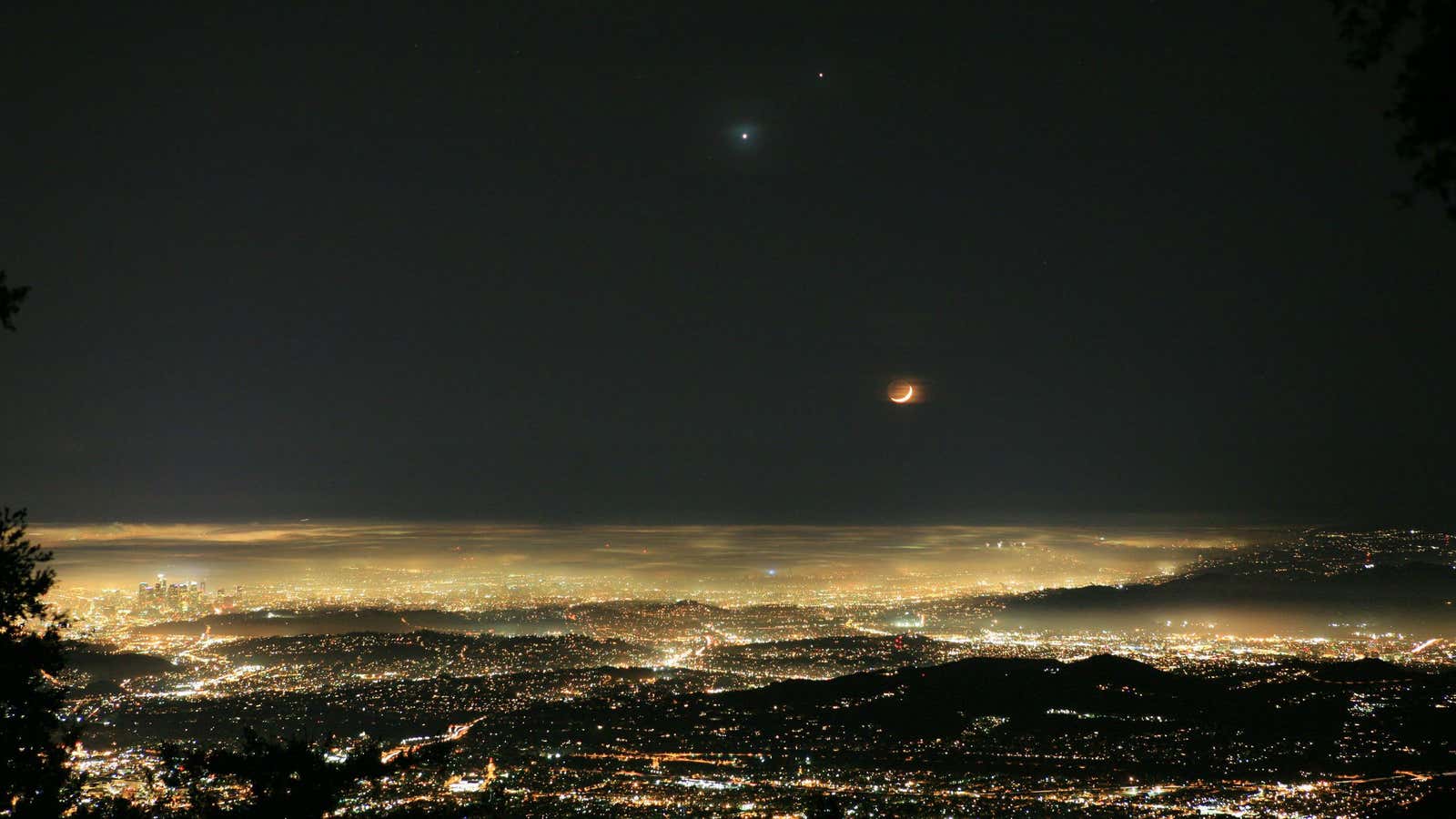This post has been corrected.
Over the last month, Venus and Jupiter have gradually converged in the night sky. Tonight, June 30, is the main event: They will pass within a third of a degree of each other, allowing you to cover them both with the same finger.
The two planets will then stay within two degrees of each other until July 4. Then, they’ll drift out of view.
You don’t have to be an experienced skywatcher to enjoy the show—just look west as it gets dark out. Venus and Jupiter will be so bright that they should be clear in the sky even before the sun fully sets. They’ll look like two extremely luminous stars to the naked eye (one if you’re nearsighted). But with a basic telescope, or even some powerful binoculars, you should be able to make out the crescent phase of Venus, as well as the clouds of Jupiter and a few of its moons by its side.
This video from NASA explains the phenomenon in a bit more detail:
Venus is currently 50 million miles away from Earth, while Jupiter is 550 million miles away. But tonight, they’ll look as if they’re right next to each other. They’ll also appear to be the same size, even though Venus is roughly the same size as Earth and Jupiter is 120 times larger than both.
The event, called a planetary conjunction, is one potential explanation for the “Star of Bethlehem”—a legend in Christianity that tells of the Magi seeing a striking star in the sky that foretold the birth of Jesus.
Conjunctions of Venus and Jupiter are rare, but not too rare. If you miss this one, you’ll be able to see it again on August 27, 2016.
Correction (June 30): A previous version of this story erroneously reported that Jupiter was 550 miles away from Earth. In fact, it is actually about 550 million miles away. If only.
